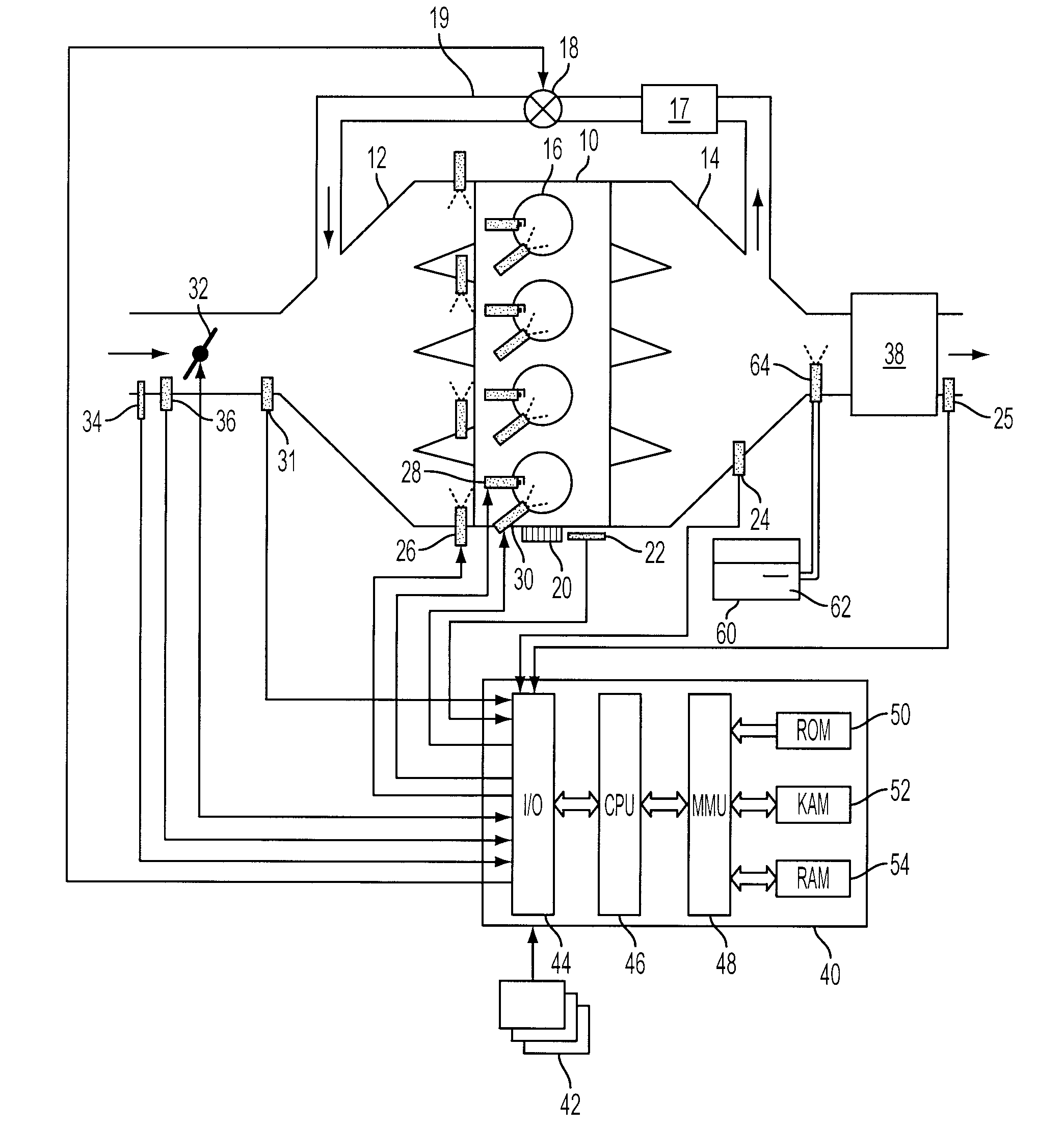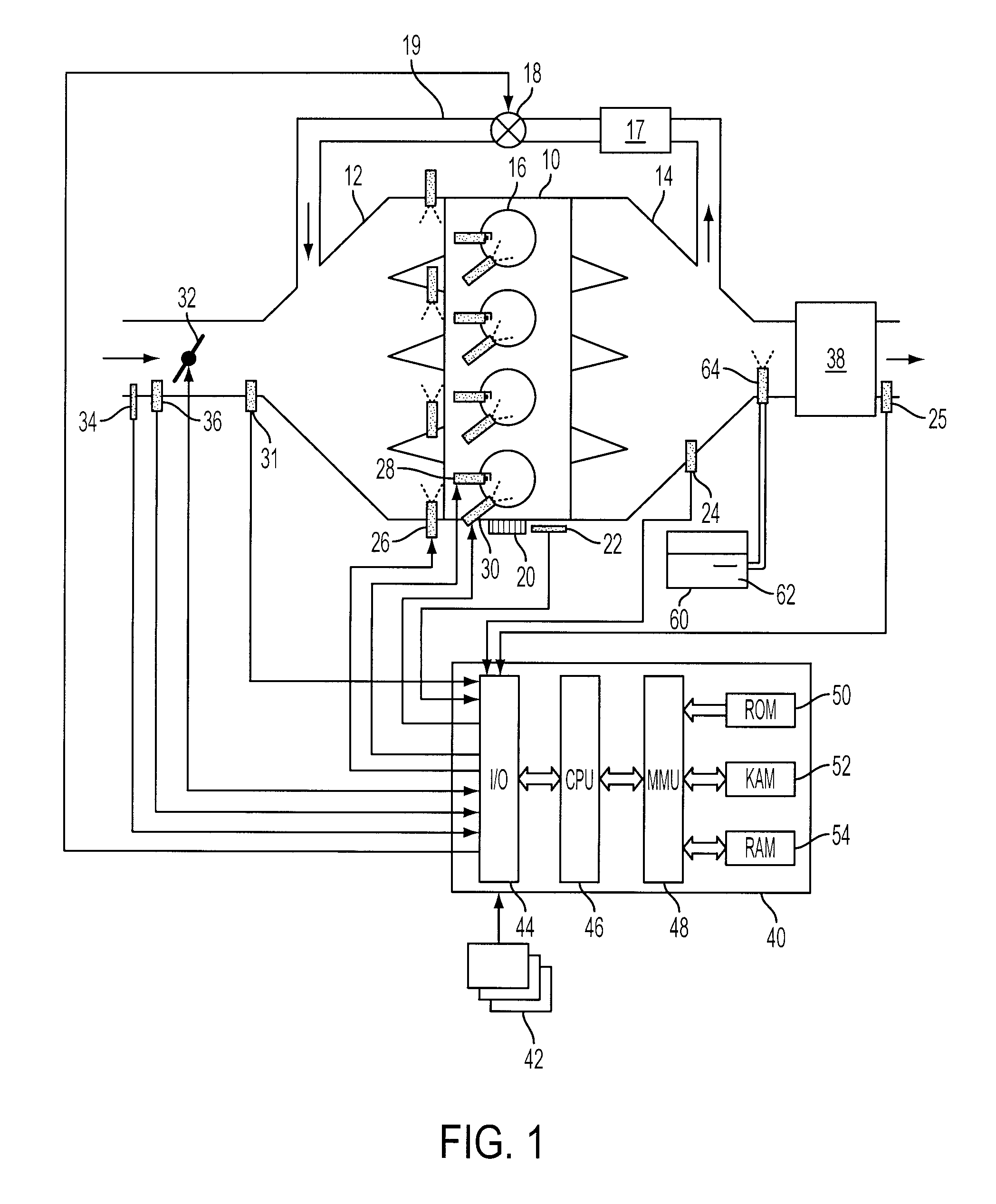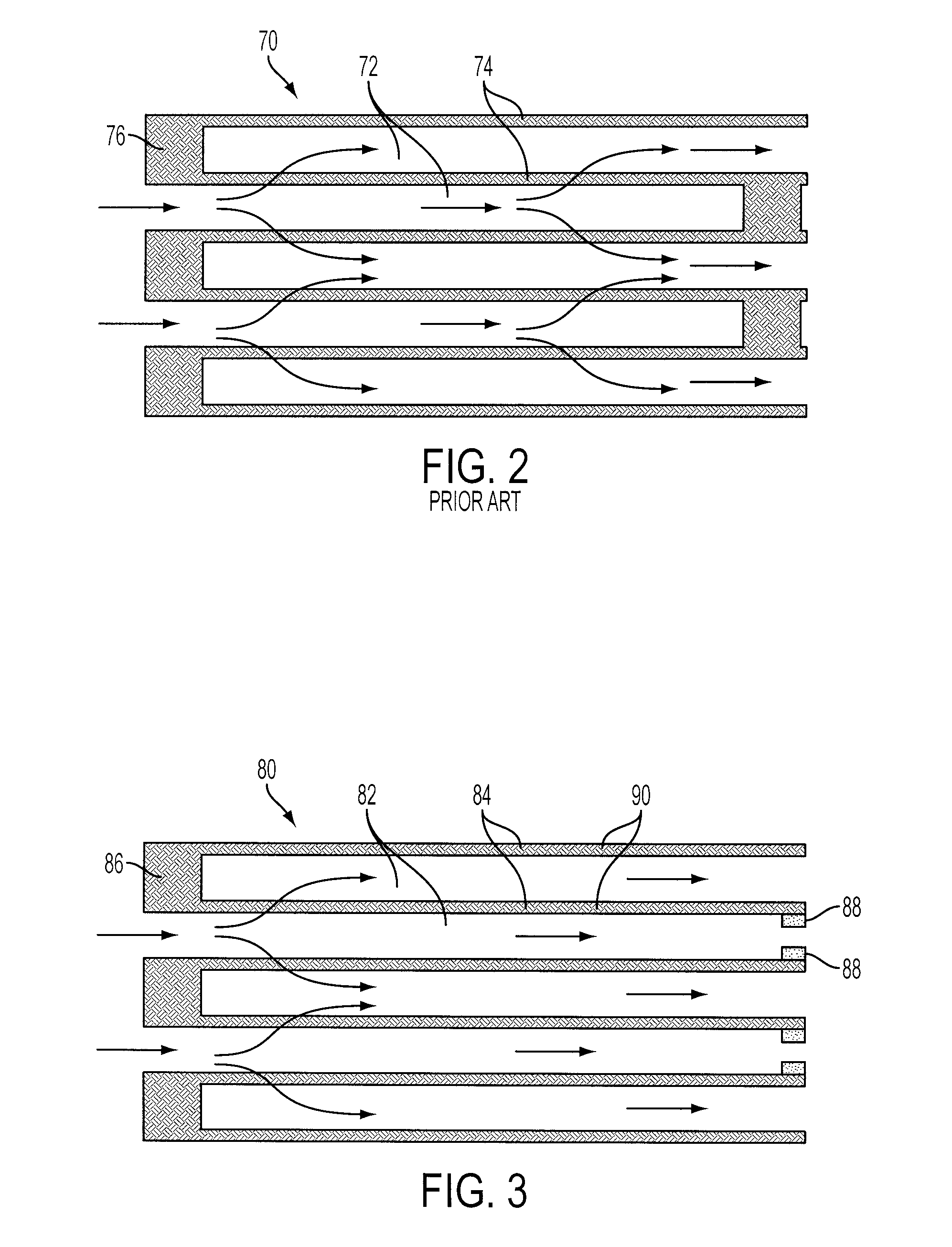Exhaust Treatment device Facilitating Through-Wall Flow
a technology of exhaust treatment device and through-wall flow, which is applied in the direction of machines/engines, mechanical equipment, separation processes, etc., can solve the problems of difficult reduction of nox tip-in spikes, significant degradation of diesel fuel economy, and low nox emission level of scrs, etc., and achieves the effect of better managemen
- Summary
- Abstract
- Description
- Claims
- Application Information
AI Technical Summary
Benefits of technology
Problems solved by technology
Method used
Image
Examples
Embodiment Construction
)
[0030] As those of ordinary skill in the art will understand, various features of the embodiments illustrated and described with reference to any one of the Figures may be combined with features illustrated in one or more other Figures to produce alternative embodiments that are not explicitly illustrated or described. The combinations of features illustrated provide representative embodiments for typical applications. However, various combinations and modifications of the features consistent with the teachings of the present disclosure may be desired for particular applications or implementations.
[0031] A four cylinder internal combustion engine 10 is shown by way of example in FIG. 1. Air is supplied to engine 10 through intake manifold 12 with spent gases discharged through exhaust manifold 14. An intake duct upstream of intake manifold 12 contains a throttle valve 32 which, when actuated, controls the amount of airflow to engine 10.
[0032] Two sensors 34 and 36 installed in in...
PUM
| Property | Measurement | Unit |
|---|---|---|
| porosity | aaaaa | aaaaa |
| porosity | aaaaa | aaaaa |
| porosity | aaaaa | aaaaa |
Abstract
Description
Claims
Application Information
 Login to View More
Login to View More - R&D
- Intellectual Property
- Life Sciences
- Materials
- Tech Scout
- Unparalleled Data Quality
- Higher Quality Content
- 60% Fewer Hallucinations
Browse by: Latest US Patents, China's latest patents, Technical Efficacy Thesaurus, Application Domain, Technology Topic, Popular Technical Reports.
© 2025 PatSnap. All rights reserved.Legal|Privacy policy|Modern Slavery Act Transparency Statement|Sitemap|About US| Contact US: help@patsnap.com



